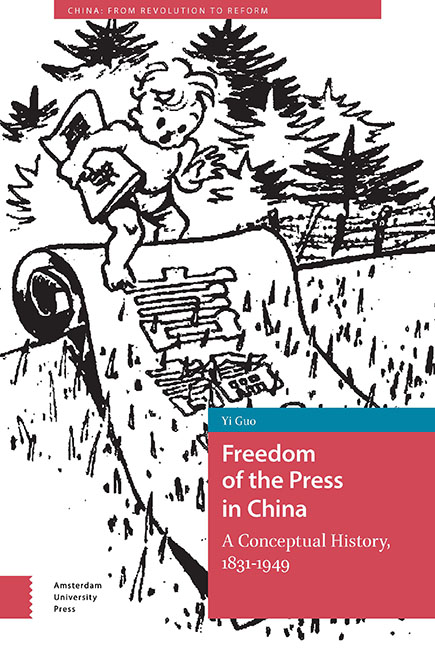Book contents
- Frontmater
- Contents
- A Note on Romanization
- Acknowledgements
- Foreword
- Introduction
- 1 The Enlightenment of the West
- 2 Chuban Ziyou: The Invention of a Neologism
- 3 The Liminal Landscape
- 4 The Intellectual Legacy of Sun Yat-sen
- 5 The Empty Phrase and Popular Ignorance
- 6 Conceptual Debates in the 1920s and 1930s
- 7 The Last Call for Press Freedom
- Conclusion
- Bibliography
- Index
5 - The Empty Phrase and Popular Ignorance
Published online by Cambridge University Press: 20 November 2020
- Frontmater
- Contents
- A Note on Romanization
- Acknowledgements
- Foreword
- Introduction
- 1 The Enlightenment of the West
- 2 Chuban Ziyou: The Invention of a Neologism
- 3 The Liminal Landscape
- 4 The Intellectual Legacy of Sun Yat-sen
- 5 The Empty Phrase and Popular Ignorance
- 6 Conceptual Debates in the 1920s and 1930s
- 7 The Last Call for Press Freedom
- Conclusion
- Bibliography
- Index
Summary
Abstract
This chapter begins by tracing the expressions of press freedom in Chinese constitutional documents from the 1910s to the 1940s. Even though the concept was enshrined in the Chinese Constitution, it was an empty phrase in practice. The chapter also examines how the concept of press freedom was covered in school textbooks during that period, showing that principles of press freedom were mentioned briefly but incoherently and were not taught well in classrooms. The chapter then illustrates the indifferent attitude of the Chinese public towards press freedom by scrutinizing conversations recorded in diaries and historical details published in newspapers at that time as well as the violence that would often be directed against newspapermen trying to exercise their right to a free press.
Keywords: Chinese revolution, freedom of the press, political education, civil rights, curriculum
After the establishment of the Chinese Republic, most common people in China had no clear and coherent understanding of press freedom. Apart from some members of the intellectual elite, the majority of Chinese people lacked essential knowledge on the issue. As a Chinese newspaper in Beijing observed in 1926, ‘the Chinese masses, no matter whether journalists and newspapermen or our common people, may not know what press freedom is exactly’. This comment seems reasonable. Despite the establishment of a ‘republican’ government, the concept of press freedom had never been effectively popularized and had not permeated most of Chinese society. In constitutional documents and school textbooks, the concept of press freedom was rarely mentioned and even seemed like an empty phrase.
Press Freedom in Constitutional Documents
As early as 1908, when the imperial court set out to prepare for the proposed constitutional monarchy, the Manchus had already tried to include the term ‘freedom of the press’ in the constitution. The Qinding Xianfa Dagang (Court Sanctioned Outline of the Constitution, 欽定憲法大綱) was the first constitutional document in modern China. It was influenced by Japan's Meiji Constitution, and most of the terms and clauses were copied from that original text. However, unlike the Japanese constitution, it vested all powers in the Chinese emperor. The Constitution stipulated that ‘Subjects, as permitted by law, have the freedom of speech, publication, assembly and association.’
- Type
- Chapter
- Information
- Freedom of the Press in ChinaA Conceptual History, 1831–1949, pp. 141 - 160Publisher: Amsterdam University PressPrint publication year: 2020



